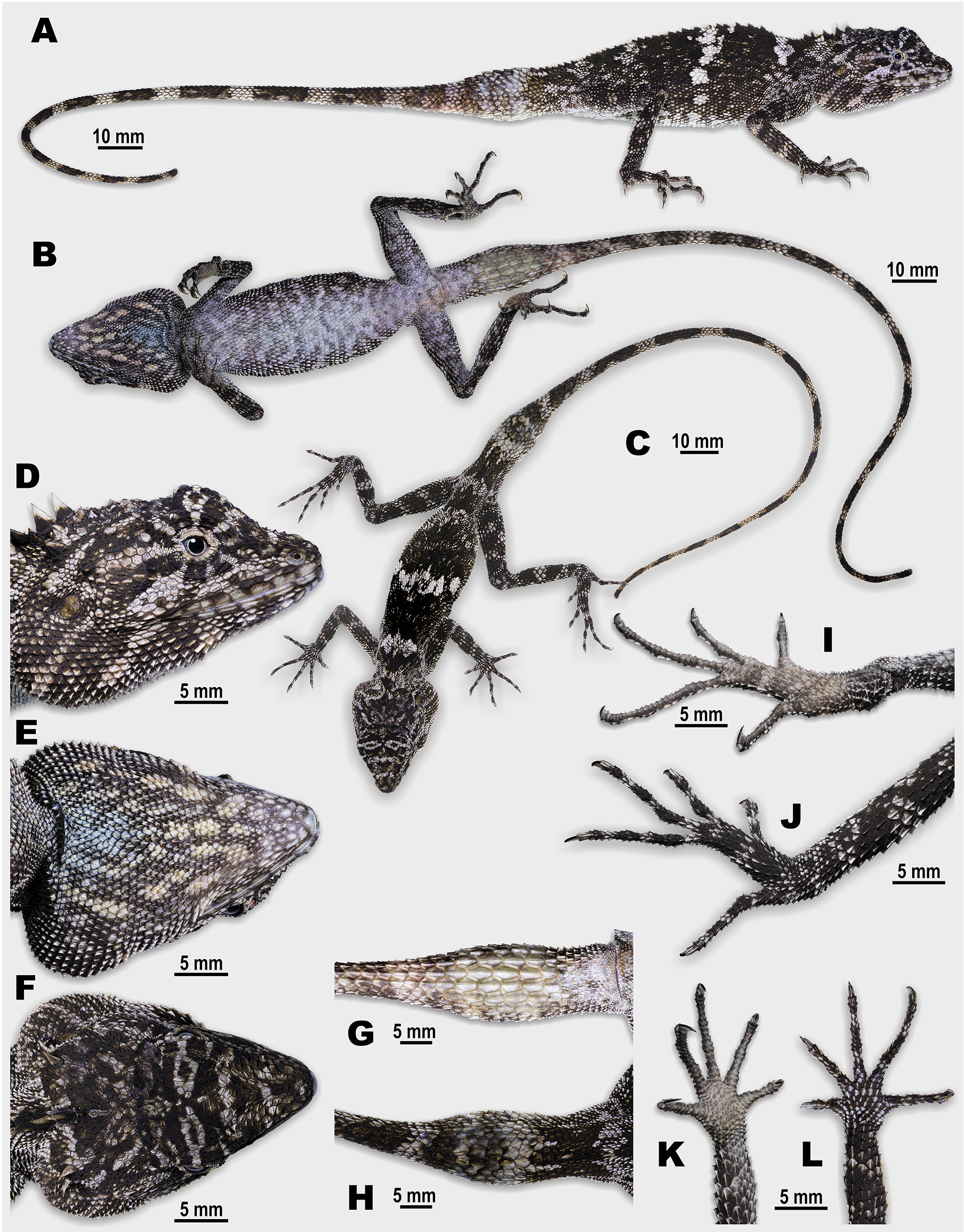If you go down to the limestone karsts of Laos you could be in for a big surprise. If you can see it that is. A new species of “dragon lizard” has been discovered living only on a very specialized landscape in Laos. The lizard is so well camouflaged that only two individuals have ever been found.
Limestone karsts are a type of sedimentary rock formation that cover large portions of southern China, the Philippine islands, and the famous Wallacea islands. They are fragmented landscapes creating deep divots and crags and caves. These unusual features create microhabitats where some of the most threatened animals on Earth find their homes, as such they are often referred to as “arks of biodiversity”.
In the karstic massifs of Khammouan Province, central Laos, researchers have discovered another such creature. Two individuals of a new species of dragon lizard have been discovered. Both adult males, these lizards possess extraordinary camouflage abilities. The first was spotted during a bird photography trip, while the second was seen by a local guide taking tourists on a ziplining experience and was subsequently caught for study.
“Indeed, when perching on top of limestone karsts, individuals of the new species become almost invisible in the mosaic of sharp shadows and light spots and are difficult to spot unless they start moving,” the researchers wrote in the paper.
These lizards have been given the name Laodracon carsticola and belong to the mainland Asia subfamily Draconinae – the team recommend the common name Khammouan Karst Dragon. This subfamily contains around 256 species that all live across Asia. The lizards within this family are typically omnivores with the species spread across tree-living and ground-living habitats.
The new species measures around 101 millimeters (3.9 inches) long and has slate gray and black scales with blue coloration on their throats and blue/gray bellies. The team say it can be told apart from other species by the noticeably swollen base of the tail (G and H in the image below).

The combination of pattern and raised scales make this lizard exceptionally difficult to spot.
The body scales of the new species exhibit pronounced rough scales which could serve to help it climb the steep limestone pinnacles on which it lives.
The local people of the area reported that the species is most active between the hours of 9 and 11 am and 3 and 5 pm. The lizards were never seen anywhere other than the rocky outcrop and the researchers believe this could be the sole population of these lizards in the world. The lizards are suspected to have a diet of ants.
Earlier this year, another species was discovered for the first time in Madagascar: a gecko that uses its amazing camouflage to seamlessly blend into the tree trunks on which it lives.
The paper is published in Zoological Research.
Source Link: New “Dragon Lizard” Species Discovered In Laos Is A Master Of Camouflage